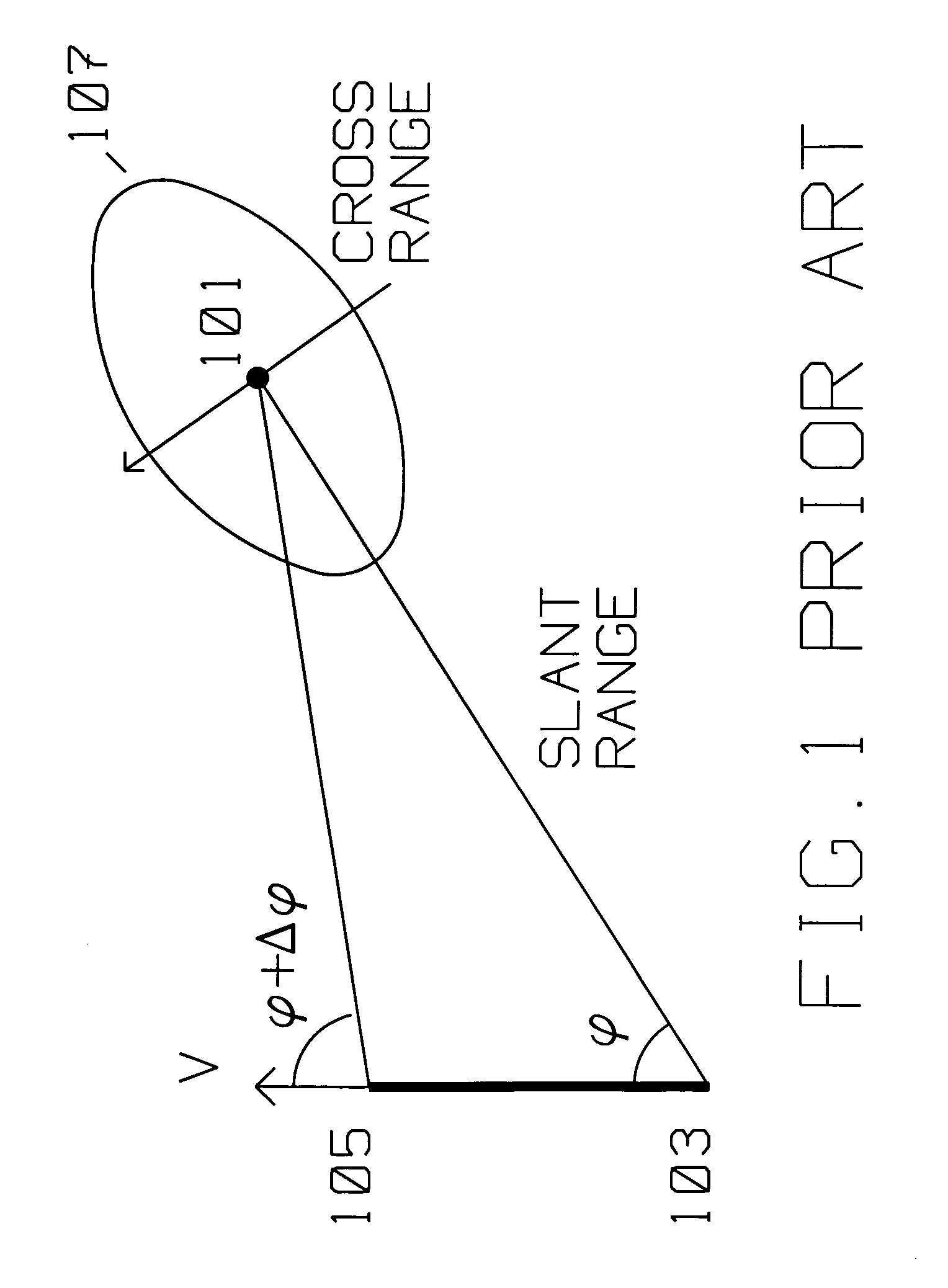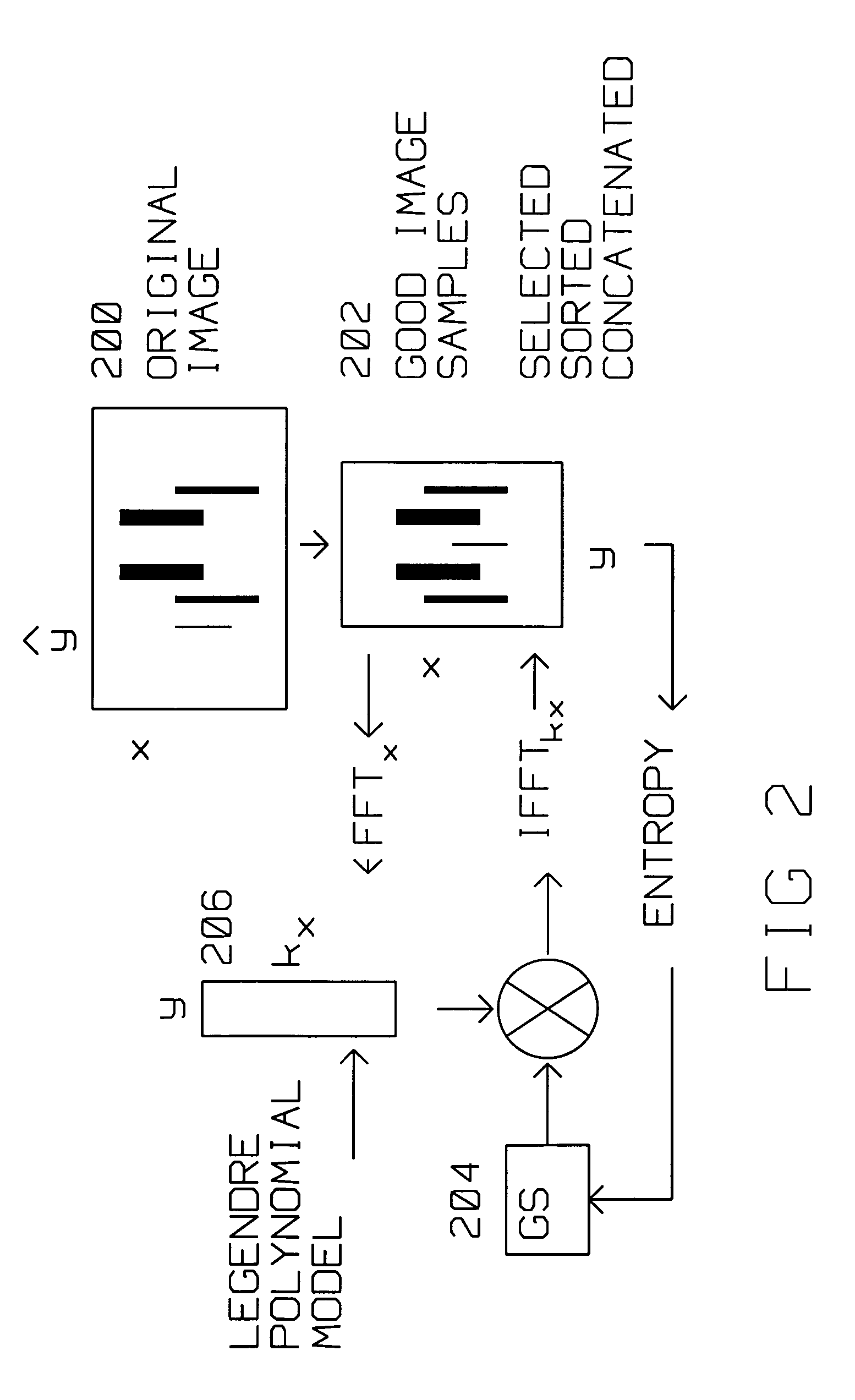Autofocus method based on successive parameter adjustments for contrast optimization
a technology of contrast optimization and autofocus method, which is applied in the direction of reradiation, measurement devices, instruments, etc., can solve the problems of insufficient accuracy of motion compensation applied to each radar a/d sample, loss of estimated phase error accuracy, and limited map drift method
- Summary
- Abstract
- Description
- Claims
- Application Information
AI Technical Summary
Benefits of technology
Problems solved by technology
Method used
Image
Examples
Embodiment Construction
[0035]The present invention describes an autofocus method for SAR images, called successive parameter adjustment (SPA) based on successive search of parameters of an orthogonal (Legendre) polynomial for best SAR image contrast and sharpness. Unlike the prior art PGA method, SPA can be applied to a SAR scene without point like targets. Unlike SSA, SPA allows choosing a balance between computational requirements and performance by adjusting the number of test image samples, and tolerance to stop iterations. SPA is also applicable for the case of the spatially variant phase error that varies with target position because local image samples for image quality measurements can be selected with fewer constraints for the estimation of the phase error that varies with target position.
[0036]Another important feature of SPA is its applicability where there are pulse drops, i.e. missing pulses during an aperture (frame) forming a SAR image. This flexibility is because SPA is based on fitting ph...
PUM
 Login to View More
Login to View More Abstract
Description
Claims
Application Information
 Login to View More
Login to View More - R&D
- Intellectual Property
- Life Sciences
- Materials
- Tech Scout
- Unparalleled Data Quality
- Higher Quality Content
- 60% Fewer Hallucinations
Browse by: Latest US Patents, China's latest patents, Technical Efficacy Thesaurus, Application Domain, Technology Topic, Popular Technical Reports.
© 2025 PatSnap. All rights reserved.Legal|Privacy policy|Modern Slavery Act Transparency Statement|Sitemap|About US| Contact US: help@patsnap.com



